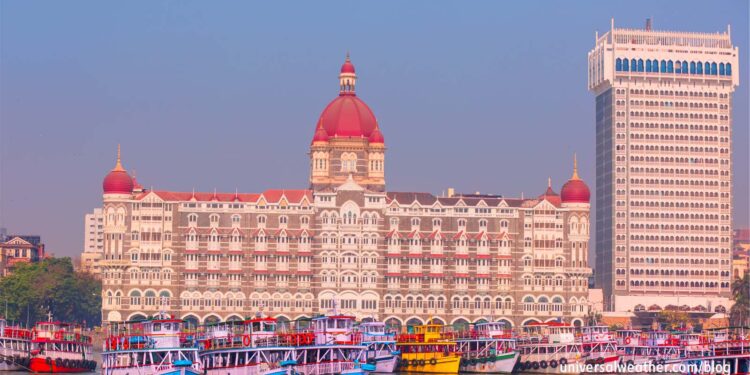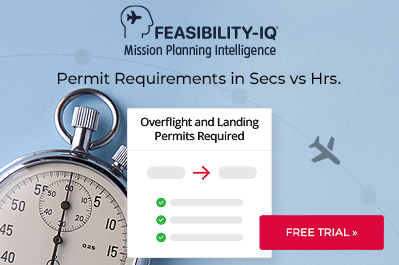Business Aircraft Ops to India – Visa Requirements, Local Area, Hotels and Culture

This business aviation blog post is part of a series on operating in India and continues from our last article: “Business Aircraft Ops to India: Additional Flight Planning Considerations & Weather.”
For flight crew operating to India there’s much to look forward to and enjoy. India is the second most populous country in the world and home to diverse geography, culture, architecture, and ethnicity. For the most successful general aviation (GA) operation to this region, however, it’s important to be diligent in terms of pre-planning and to work closely with your 3rd-party provider and local ground handlers.
The following is an overview of what you need to know:
1. Required personal documents and visas
To enter India all passengers and crew must have passports with at least six months remaining validity. Passengers who require visas for India should obtain these prior to operating to this country. Some nationalities qualify for the newly available e-Tourist Visas when entering the country via certain airports for tourism or casual business purposes. To determine if you qualify for an e-Tourist Visa see the official website. The benefit of this type of visa is that it’s quick to obtain and you don’t need to send off your passport off for visa processing. If you require a business visa, or are landing at an airport that’s currently not part of the e-Tourist Visa program, these must be obtained prior to arrival in India.
2. Visa types
Crew require either a business visa or a temporary landing permit (TLP) to enter India. Crew, regardless of nationality, are able to obtain a TLP on arrival if they have valid passports, crew IDs and are listed on the gen dec. TLPs are issued upon arrival with a validity up to 72 hours and require approximately 40 minutes to process on arrival. For more information on TLPs see India’s Bureau of Immigration website. There’s another type of crew visa on arrival that’s valid for up to seven days but issuance of this is at thr discretion of local immigration officials. It’s always recommended, however, that crew members obtain visas prior to arrival.
3. Nationality restrictions
There are particular restrictions on some nationals — including those from Afghanistan, Pakistan and Somalia — when traveling to India. There are also certain restrictions impacting Chinese nationals. For example, Chinese nationals must always obtain visas prior to arrival in India and are not permitted to travel to Port Blair (VOPB). Your ground handler can explain the finer points, in terms of visa and entry restrictions for restricted nationalities.
4. Vaccination requirements
If you’re traveling to India from a country endemic for yellow fever you’ll need to have a vaccination and a valid vaccination certificate prior to arrival. Be mindful that incubation period for yellow fever vaccine is 10 days, and it’s valid for 10 years. The vaccination must be done well prior to arrival in India. A list of countries endemic for yellow fever can be found at on India’s immigration website.
5. Agriculture and quarantine considerations
India does not have specific agricultural restrictions in place at this time. Therefore, it’s possible to bring food products into the country and to store onboard in-flight catering until the next leg of your flight. However, it’s always recommended that you confirm such arrangements in advance with your ground handler. If you’re traveling with a pet be aware that animal quarantine in India has become particularly strict and importation guidelines change frequently. Prior notice is needed when operating to India with your pet as the ground handler will need to arrange for a local vet to meet your flight upon arrival.
6. Pet importation
Basic documents required for temporarily importing a dog or cat into India include a Health Certificate and a No Objection Certificate (NOC) which is the import permit. There are service providers available at major airports in the country that are able to assist with the importation process. Pets may be brought into India in one of two ways — as “accompanied baggage” or “manifest cargo.” Be aware, however, that only two pets (dogs/cats) are permitted to travel under one owner’s name irrespective of whether the pet is accompanied baggage or manifest cargo. So, you’ll not be able to bring a full menagerie of dogs and cats onboard with you nor will you be able to operate to India with more exotic pets. For more information on bringing you pet with you to India see the Furry Flyers website.
7. Special event periods
Major public events and holidays — such as the October-December Festival of Light — occur in India on a regular basis. While these events may impact hotel availability and traffic congestion, they do not usually restrict GA operations or aircraft parking availability. Be mindful, however, that October-March is peak tourist season in India and cities such as Goa and Jaipur tend to attract a great deal of additional activity. There are times and locations where GA parking may become an issue during peak tourism periods, so it’s best to set up all required aircraft services and crew accommodations as early as possible.
8. Security considerations
Larger airports in India have good security in place with airport patrols, video surveillance, and adequate airside access control. In terms of off-airport security India is a fairly safe country. The major risk is petty crime, such as pick pocketing, and it’s best not to travel alone at night particularly when on the outskirts of a city. Be cautious, also, when traveling to certain areas along the border with Pakistan. There’s a tourist area close to the Pakistan border — near Amritsar (VIAR) — which are considered safe, but other areas along this border region should be avoided.
9. Local transport
For crew travel within India it’s best to use prepaid transport (car with driver) options. Rental vehicles are not recommended due to high traffic congestion and parking issues in major cities. Rental vehicles may be a viable option to consider in such tourist areas as Goa and Jaipur, but you need to be familiar with the area and know where you’re going. Note that rental cars are not available at all airports and may need to be brought in from off-airport. Be aware that most rental vehicles in India have manual transmissions.
10. Hotel options
At larger cities in India there are good selections of 4- and 5-star crew accommodations. This includes major international hotel chains as well as excellent local brands such as Leela Hotels, Oberoi Hotels and Taj Group. Average cost for a 4-star hotel is 80-150 USD per night although rates can increase depending on the season and destination. At smaller cities in India hotel options are more limited and should be researched well in advance. Airport hotels are recommended in some areas, but it’s often best to travel into the downtown area to source the best accommodation options. Your ground handler can advise on the best local hotel options and any special crew rates that may be available.
11. Availability issues
Crew accommodations should be confirmed well in advance to avoid issues or challenges in obtaining desired accommodations. Last minute reservations for hotels could be problematic during events such as the biennial Indian Aviation Exhibition and Conference. Accommodations in Goa and Jaipur areas, likewise, are often in short supply during peak tourism season.
12. Cultural considerations
Hindu is the primary religion in India, and it’s important to ensure you never wear shoes when entering a temple. A wonderful assortment of local cuisines is available throughout India, and crew are encouraged to enjoy these local options. Beware, however, of buying food directly from street vendors at the side of the road. Your ground handler can suggest the best restaurant options and where to and where not to sample assorted street food delicacies. In addition to local museums, galleries and temples consider tours within the greater local area. Agra – home of the Taj Mahal — and Goa — with its unique mix of Indian and Portuguese culture and architecture — are well worth visiting if you have the time.
13. Additional reading: Business Aircraft Ops to India – Series Index
Note: Links will be updated as articles are published.
- Part 1 – Airport options
- Part 2 – Airport operations
- Part 3 – Ground handling
- Part 4 – Additional services and operating costs
- Part 5 – Fuel and security
- Part 6 – CIQ
- Part 7 – Permit considerations
- Part 8 – Slots and military operations
- Part 9 – Flight planning
- Part 10 – Weather and additional flight planning information
- Part 11 – Hotel and local area
Conclusion
Be aware of the entry document requirements for India, especially visa regulations. Take into consideration requirements and restrictions for bringing animals into the country. If you’re in India for an extended stay, a couple of days or longer, there are many tourism areas and sites to visit.
Questions?
If you have any questions about this article or would like assistance planning your next trip to India, contact Christine Vamvakas at christinevamvakas@univ-wea.com.




